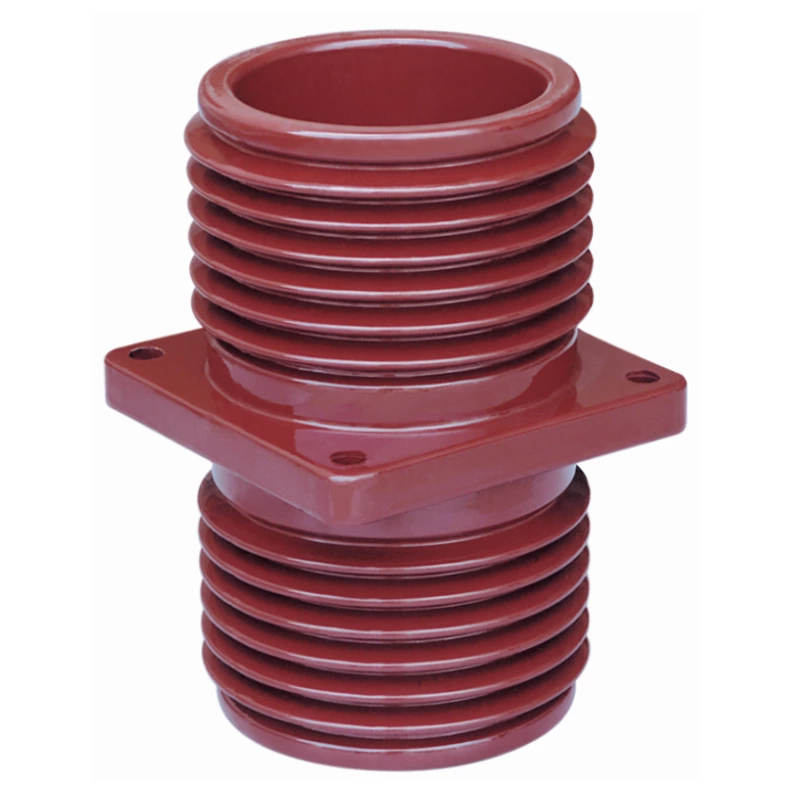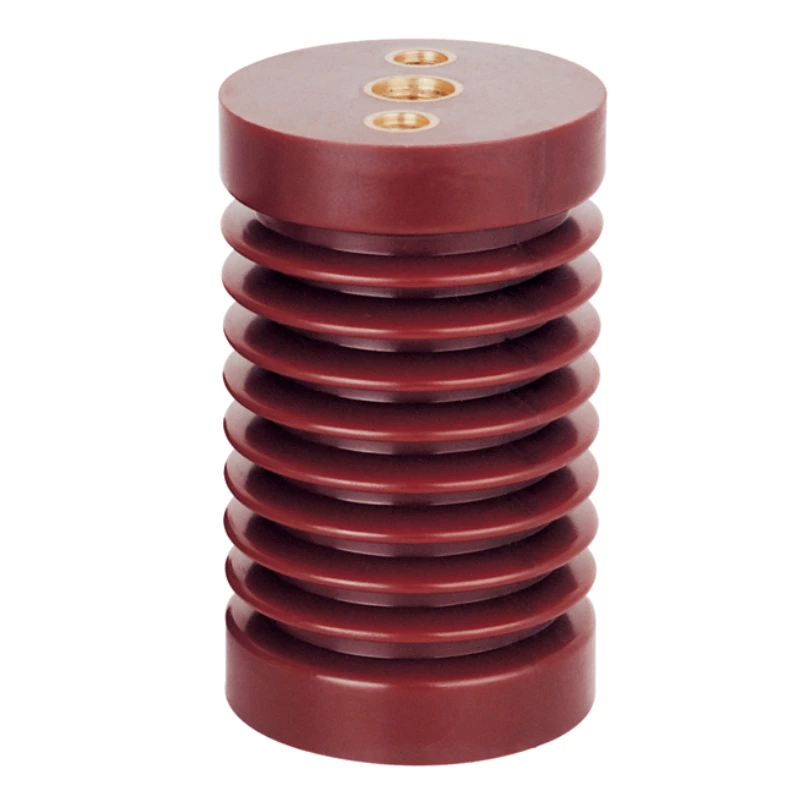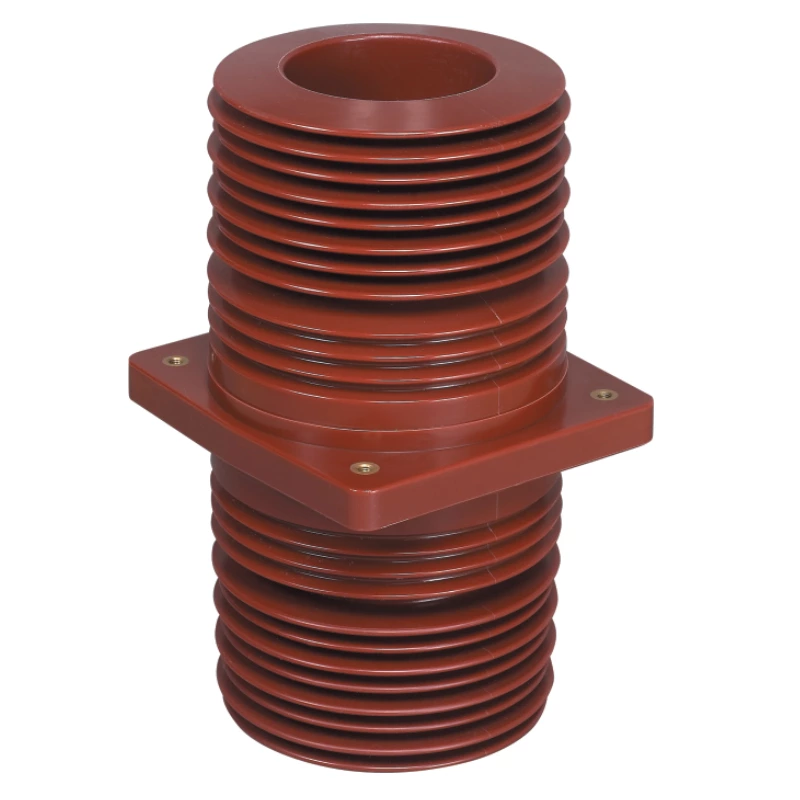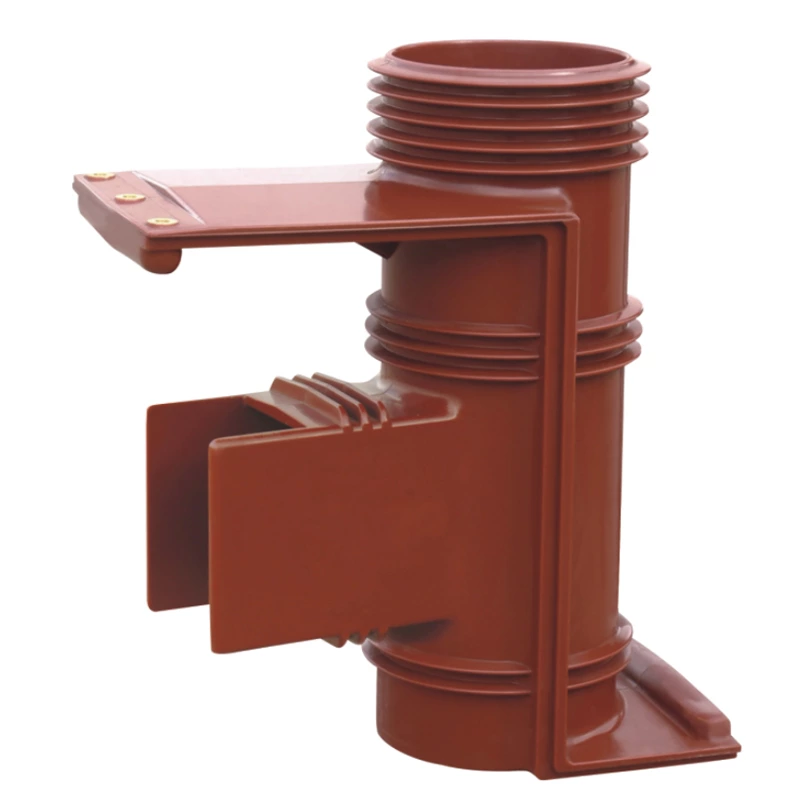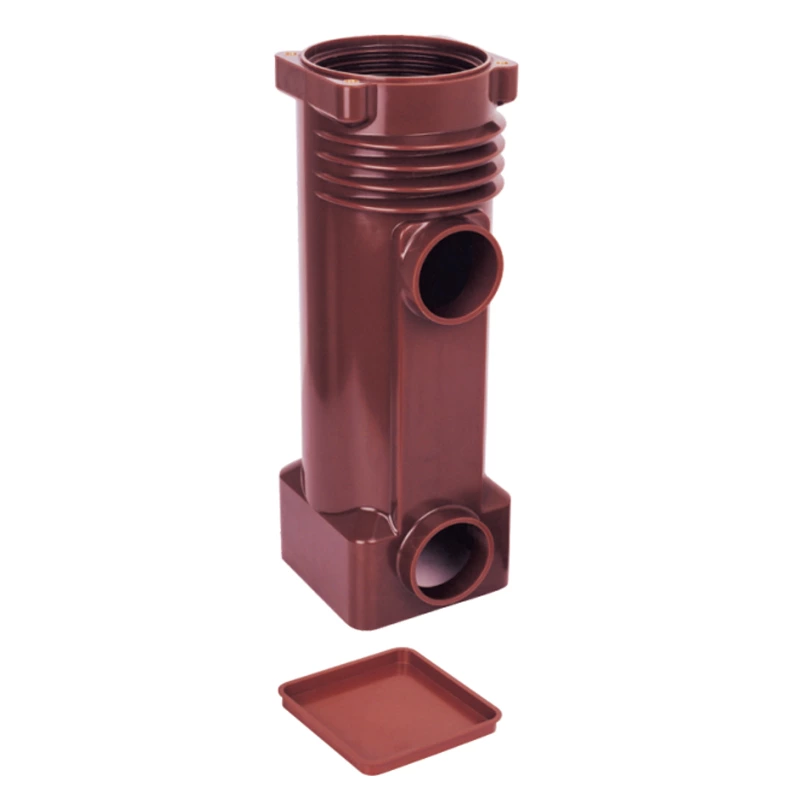Classification Of Insulating Sleeves
1.Switchgear Insulating Bushing
Using pure porcelain or resin insulation, it is often made into a wall bushing for voltage levels of 35 kV and below. Its insulating parts are tubular, with a flange clamped or glued in the middle to fix it on the perforated wall. The flange is generally made of gray cast iron, and non-magnetic materials are often used to reduce heat generation when the working current is greater than 1500A. The insulation structure of a single insulating bushing is divided into two categories: with air cavity and air cavity short circuit. Air cavity bushing is used for voltage levels of 10 kV and below. There is an air cavity between the conductor and the porcelain bushing as auxiliary insulation, which can reduce the bushing capacitance and increase the corona voltage and sliding flash voltage of the bushing. When the voltage level is higher (20~30 kV), corona will occur inside the air cavity and make the above effect invalid. At this time, the air cavity short circuit structure is adopted. The inner wall of the porcelain bushing of this porcelain bushing is coated with semiconductor glaze, and a spring sheet is connected to the conductor to short-circuit the air cavity to eliminate internal corona. However, corona and sliding flash may still occur near the flange.
1.2 Composite dielectric bushing
Using oil or gas as the insulating medium, it is generally made into transformer bushing or circuit breaker bushing, and is commonly used for voltage levels below 35 kV. The inner cavity between the conductor and the porcelain sleeve of the composite insulating bushing is filled with transformer oil, which plays a radial insulation role. When the voltage exceeds 35 kV, an insulating tube or cable is sheathed on the conductor to strengthen the insulation. The conductor structure of the composite insulating bushing has two types: cable-through type and guide rod type. The cable-through type uses the transformer's lead cable to directly pass through the bushing, which is easy to install. When the working current is greater than 600 amperes, the cable-through type structure is more difficult to install, and the guide rod type structure is generally used. The capacitor bushing consists of a capacitor core, a porcelain sleeve, metal accessories and a conductor. It is mainly used for ultra-high voltage transformers and circuit breakers. Its upper part works in the atmosphere and the lower part works in the oil tank. The capacitor core of the capacitor bushing serves as the inner insulation, and the porcelain sleeve serves as the outer insulation, which also plays a role in protecting the capacitor core. The electric field on the surface of the porcelain sleeve is evenly distributed due to the equalizing effect of the internal capacitor core, thereby improving the electrical insulation performance of the bushing. Metal accessories include intermediate connecting sleeves (flanges), end covers, equalizing balls, etc. The conductor is a cable or a hard steel pipe.
1.3 Capacitor bushings
According to different insulating materials, they are divided into adhesive paper and oil paper capacitor bushings. When the core of the bushing capacitor is made of adhesive paper, it has high mechanical strength, can be installed at any angle, has good moisture resistance, simple structure and maintenance, does not need to be lowered, and the lower end of the core can be turned into a short tail to reduce its size. The disadvantage is that at high voltage levels, the insulation materials and process requirements are high, and it is not easy to eliminate the air gap in the core, resulting in low partial discharge voltage. Due to problems such as high dielectric loss and low partial discharge voltage, adhesive paper capacitor bushings have gradually been replaced by oil paper capacitor bushings. When oil paper is used as the capacitor core, it generally requires a lower porcelain sleeve, the lower part is larger in size, is more sensitive to moisture, and has high sealing requirements; the advantages are that the insulating material and process are easy to solve, the dielectric loss is small, and the partial discharge performance is good.
